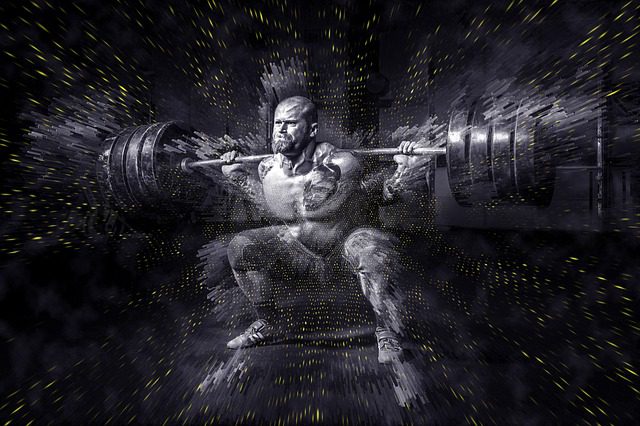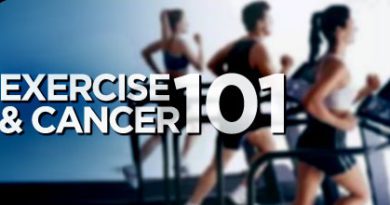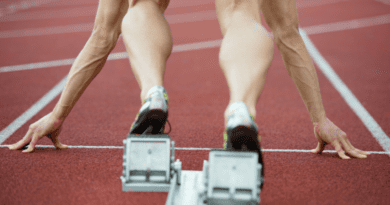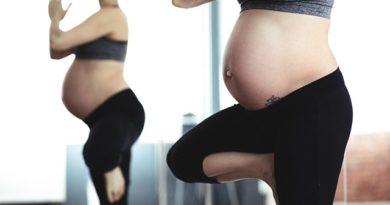10 Helpful Workout Accessories That Allow You to Lift Heavier
We’ve all been to the gym and wondered what type of sorcery the guy in the corner has up his sleeve that he continually loads up the barbell with way more than you could ever imagine, yet is not much bigger than you. Sometimes it can come down to the workout accessories he’s using to improve his strength.
Related Article: Gym Accessory Guide
This article showcases 10 workout accessories that can help you make sizeable muscle gains as well as an improvement in your overall strength when utilized correctly. Have a weak grip? This article can help compensate! Sweaty hands? No problem! Maybe you have some nagging injuries or banged up joints? We have you covered! All of the items below can be found on Amazon and for your convenience, a link will be provided for an example of the workout accessories mentioned.
Disclaimer: It is recommended that you speak with your doctor before starting any exercise program or using any of the workout accessories listed throughout this article.
Table of Contents
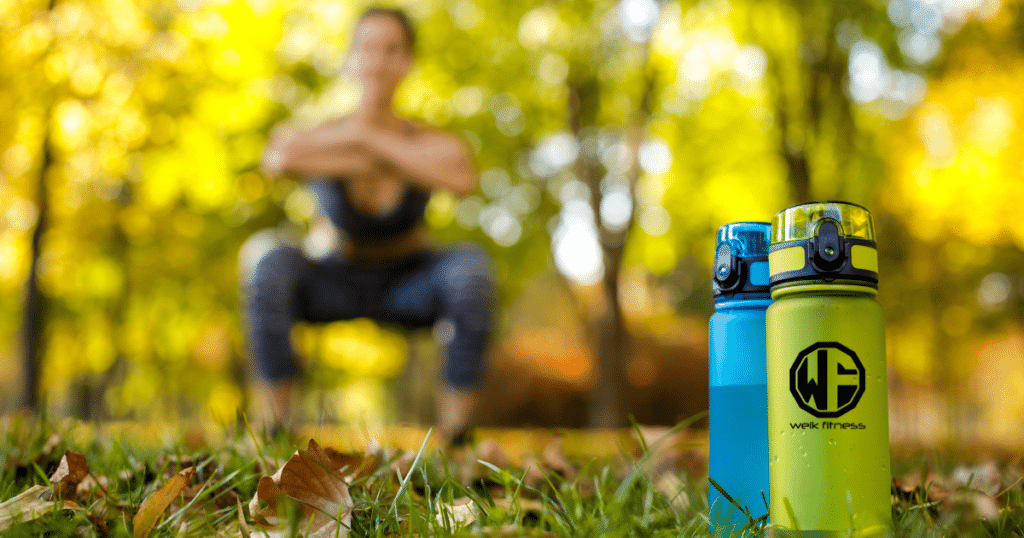
Why Would You Want or Need Workout Accessories?
Workout accessories can serve various purposes, enhancing your exercise routine and overall fitness experience. Here are several reasons why you might want or need workout accessories:
- Safety and Protection:
- Gloves and Wrist Wraps: These provide grip support and protect your hands and wrists during weightlifting or activities that involve gripping.
- Comfort:
- Quality Footwear: Proper shoes provide support and comfort, reducing the risk of injuries and improving overall performance.
- Moisture-Wicking Clothing: Fabrics that wick away sweat keep you dry and comfortable during workouts.
- Performance Enhancement:
- Weightlifting Belt: Offers support to your lower back during heavy lifting, helping maintain proper form and prevent injuries.
- Lifting Straps: Assist in grip strength, allowing you to lift heavier weights for certain exercises.
- Versatility and Variation:
- Resistance Bands: Add resistance to exercises, helping to build strength and flexibility. They are portable and versatile for various workouts.
- Yoga Blocks and Straps: Assist in achieving proper alignment and depth in yoga poses, making the practice more accessible.
- Recovery and Mobility:
- Foam Roller: Helps in self-myofascial release, reducing muscle tightness and improving flexibility.
- Massage Tools: Devices like massage sticks or massage balls can aid in muscle recovery and alleviate soreness.
- Tracking and Monitoring:
- Fitness Tracker: Monitors your heart rate, steps, and other metrics, providing data to track and optimize your workouts.
- Smartwatch: Offers features like workout tracking, GPS, and notifications to keep you connected and informed during exercise.
- Motivation:
- Wireless Headphones: Enhance your workout experience with music or podcasts, keeping you motivated and focused.
- Fitness Apps: Utilize apps for guided workouts, goal tracking, and personalized training plans.
- Hydration:
- Water Bottle: Staying hydrated is crucial during exercise, and having a convenient water bottle ensures you can easily access fluids.
- Environmental Considerations:
- Mat: Essential for activities like yoga or pilates, providing a comfortable and clean surface for your workouts.
- Specialized Training:
- Boxing Gloves and Punching Bag: For those involved in boxing or kickboxing workouts, these accessories are essential for protection and effective training.
Overall, workout accessories can contribute to safety, comfort, performance, recovery, and motivation, making your fitness journey more enjoyable and effective. The specific accessories you choose will depend on your fitness goals, preferences, and the type of exercises you engage in.
Are Workout Accessories Necessary?
Workout accessories are not strictly necessary for everyone, as the effectiveness of your fitness routine ultimately depends on your personal preferences, goals, and the type of exercises you engage in. Many people have successfully achieved their fitness objectives without using specific accessories. However, for certain individuals and specific activities, workout accessories can offer benefits that enhance the overall exercise experience. Here are some considerations:
- Personal Preference:
- Some people may find accessories enhance their comfort, motivation, or enjoyment during workouts, while others may prefer a more minimalist approach.
- Safety and Injury Prevention:
- In some cases, accessories like proper footwear, gloves, or weightlifting belts can contribute to safety by preventing injuries and supporting proper form during exercises.
- Specific Fitness Goals:
- Depending on your fitness goals, certain accessories may be more relevant. For example, weightlifting accessories like lifting straps or belts can be beneficial for those focusing on strength training.
- Medical Considerations:
- Individuals with specific medical conditions or injuries may find certain accessories, such as knee braces or wrist wraps, necessary for support during exercise.
- Variety and Versatility:
- Accessories like resistance bands or yoga blocks can add variety and versatility to your workouts, targeting different muscle groups and improving overall fitness.
- Convenience and Motivation:
- Some accessories, such as wireless headphones or fitness trackers, provide convenience and motivation, making it easier to stay engaged and committed to your fitness routine.
While workout accessories can offer advantages, it’s important to note that they are not a substitute for a well-rounded fitness program that includes regular exercise, a balanced diet, and adequate rest. Before investing in accessories, consider your individual needs, preferences, and fitness goals. It’s also advisable to consult with fitness professionals or healthcare providers to ensure that any accessories you use are suitable for your specific circumstances.
Ultimately, the necessity of workout accessories varies from person to person, and you can achieve a successful fitness journey with or without them. If you enjoy using accessories and find they enhance your experience, then incorporating them into your routine can be a positive choice.
10 Helpful Workout Accessories You NEED
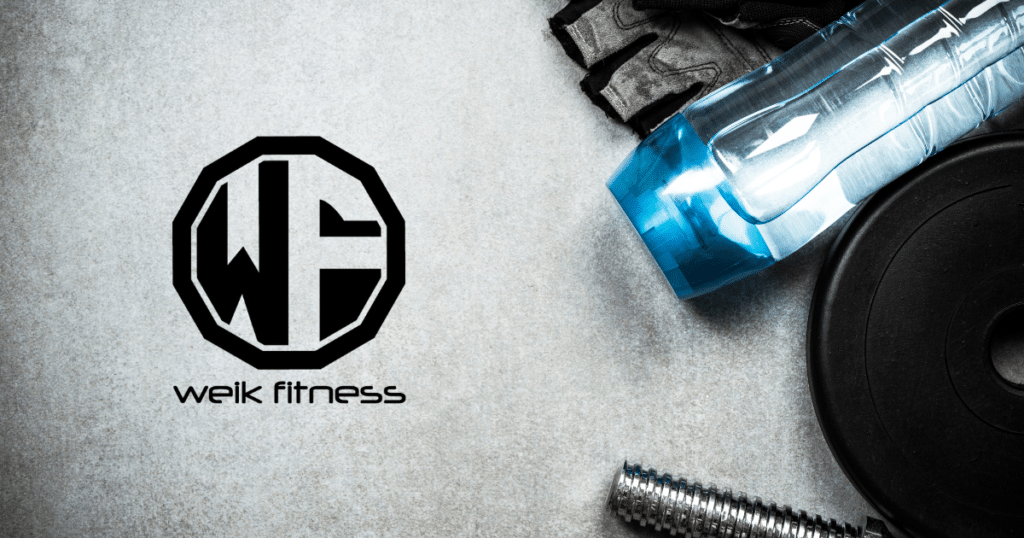
Below are our top 10 workout accessories that you should have to help get the most out of your training sessions. The below is in no particular order.
1) Chalk
Chalk is one of the workout accessories that you would need to speak with the management of the gym about before using. In some gyms chalk is frowned upon due to the mess it creates not only on the equipment, but also the floor.
When your hands become sweaty, it’s difficult to keep a firm grip on the barbell. The chalk absorbs the moisture (sweat) and allows you to once again have a secure purchase on the barbell when performing an exercise.
If your gym allows you to use chalk, a great brand to consider purchasing would be the Z-Athletic Chalk Ball. This chalk comes in the form of a ball inside a cotton sack. It helps minimize the mess generally associated with loose chalk and keeps it all confined so it doesn’t get all over the place in your gym bag. If chalk is not permitted in your gym, consider using a liquid form instead. A great brand to look at would be a product by Nelson Sports called Dry Hands Ultimate Gripping Solution. This is a non-greasy, non-sticky liquid without the powdery mess. It gives you the same grip capability of chalk, only a little bit more expensive but in an easy to use liquid form.
2) Gloves
There are those out there who make fun of people who wear workout gloves. They believe gloves are only for women to protect their delicate hands. Well, workout gloves actually have a purpose other than to help protect the hands from callouses, cuts, and bruises. If you find your hands sweat a lot, it prevents you from maintaining a secure grip on the bar. Similar to above with chalk, the gloves allow you to have a dry and stable purchase when moving around heavy weights. With wet and slick hands, you risk losing your grip and injuring yourself. If you find yourself constantly wiping off your sweaty hands at the gym, gloves might be just the trick.
There are several brands and styles of gloves available on the market. For the sake of this article, I’m going to narrow it down to two different types of gloves. The first glove is the Harbinger Power Weightlifting Glove with StretchBack Mesh and Leather Palm. This is a very basic glove that fits the hand well, is stretchy enough to not be too tight on the hand, yet gives amazing grip while exercising. The second glove is the Harbinger Training-Grip Wristwrap Weightlifting Gloves with TechGel-Padded Leather Palm. These gloves kill two birds with one stone.
Not only are they amazing weightlifting gloves, but they provide the user with a way to secure the glove in place that is actually a lifting strap (which we will talk about below). This glove protects your hands, improves your grip, and helps support your wrist when using heavy weights. This is a win-win if you’re in the market for gloves yet also want some stability for your wrists.
3) Straps
This gym accessory has been used for quite some time to help people use a heavier weight on certain exercises by improving your grip. This is one of the most common workout accessories you’ll see today. You can have a weak grip for several reasons. One reason would be that your hands are sweaty and your grip is compromised. Another reason why you could use straps would be due to weak forearms or grip strength. Through the use of straps, you are able to overload the muscle group you are looking to work.
Straps are formed when a piece of cloth is sewn onto itself to form a loop. The long end of the cloth is then passed through the loop and goes around your wrist. The loose piece of cloth can then be wrapped around the barbell and finishing with your hand over top of the loose end to lock it into place.

A great pair of straps that are very inexpensive would be the Harbinger Big Grip No-Slip Nylon Lifting Straps with DuraGrip. You get a set of 2 straps with the purchase and you can choose from a regular pair without any padding, a pair with padding for around your wrist, and then a pair that has a Velcro buckle to help keep a secure lock on your wrist with a good amount of padding surrounding it for added comfort.
4) Weight Belts
Some might say weight belts are not needed and should be avoided, yet there are many cases where weight belts are very advantageous to use in order to lift heavy weights. They allow for better support for your lower back as well as helping increase the intra-abdominal pressure to help keep your core tight during the movement such as with a squat. The downside to this would be that you really aren’t improving your core strength. With the belt, though, if your core isn’t strong enough yet, allows for better pressure to be formed internally to protect your spine and keep it stabilized.
When looking for a belt, I’d recommend skipping the nylon belts with the Velcro closure and opt for a leather or one with a heavy duty buckling system. A pretty common leather belt that has been used for a very long time would be the Valeo VRL 6-Inch Padded Leather Belt. An example of a more high-tech belt would be the Lever Buckle Powerlifting Belt. This uses a lever locking system to allow for an extremely secure fit and closure.
5) Knee Wraps
Your knees are under a lot of stress during movements such as the squat. In order to protect your knees, many people use wraps. Wraps, however, don’t necessarily make you stronger. Knee wraps allow you to store energy in the elastic to help aid in the movement. For example, when squatting with knee wraps, when you are sitting in the bottom of the position, the stored energy in the tight wraps aid in helping your stand back up.
If looking to pick up a pair of knee wraps, Harbinger has a great pair available called their Red Line 78-Inch Knee Wraps that I would highly recommend. They are fairly inexpensive and are extremely durable workout accessories.
6) Wrist Wraps
A product primarily used for pressing and overhead movements, wrist wraps can allow you to push more weight — especially if you have weak wrists. If you’re looking for the best fit and comfort, elastic wraps are the way to go. In terms of durability, leather would win in that instance. However, in my opinion, go with the elastic version over the leather. Worst case scenario after a year or so you may have to replace the elastic version, but the good news is that they aren’t expensive so for the sake of your comfort and a better fit, I’d invest in the elastic.
A brand online that has been getting a lot of great reviews and feedback has been Evolutionize Wrist Wraps. They are 18-inch high-grade nylon with good elasticity.
7) Weightlifting Shoes
It’s common for most people to walk into the gym with athletic or running shoes. You see brands like Nike, Under Armour, Adidas, and Reebok pounding the floor day in and day out. What some people don’t realize is that not all shoes are created equally when it comes to lifting heavy weights. Those soft and comfy shoes you are accustomed to wearing around town won’t do you much good when you’re getting under the barbell loaded up with a bunch of 45-pound plates.
Weightlifting shoes are built to be extremely rigid to provide a solid platform for exercises such as the squat. This rigidness allows the bones of the lower leg and ankle to stay aligned to help produce more force through the movement. When a lifter uses a shoe that provides more cushioning, the lower leg muscles need to stabilize the ankle in order to produce a force great enough to complete the squatting movement. These shoes also usually have an elevated heel of around 1 inch to help move the shins forward to allow your back to be put in a more upright position while squatting heavy.

In my opinion, there are two methods when deciding what shoes you want to wear as workout accessories. If you want something that has a solid sole yet isn’t 100% a weightlifting specific shoe and doesn’t break the bank, you can go with a Converse Chuck Taylor. If you specifically want something to work on movements like the squat, jerk, etc. then I would look more at something like the Adidas Powerlift Trainer 2. The prices of weightlifting shoes can vary from as low as around $75 to upwards of over $300. These are one of the more expensive workout accessories out there.
8) Bench Shirts
On the higher end of the accessory price points would be the bench shirt. While not everyone would need a bench shirt, they are extremely helpful if you are a powerlifter or someone who simply wants to throw on the plates and do some serious benching. While not meant as a fashion statement, these shirts force you to keep your arms out in front of you, perpendicular to your body as if you were a mummy or zombie. The shirt helps store energy as you lower the bar towards your chest and helps push the bar back upwards from the bottom position of the bench. A good bench shirt allows the user to still arch the back when doing the benching movement and allows the lats to expand rather than constricting them due to the tightness of the fabric. Most bench shirts are extremely durable and virtually tear-proof.
If these workout accessories are something you feel are up your alley, then I’d recommend starting with a lower-end bench shirt to see if it’s something you like before investing in a more expensive version. A good starting point would be The Fury by Titan Support Systems.
9) Slingshot
The creator of Slingshot, Mark Bell, was looking for a way to work on his bench press before inventing this product. He was trying to figure out a way to improve the lockout strength piece of the bench press movement. After some trial and error, the Slingshot was invented.
How the Slingshot works is in its ability to bring the arms together. So, as you bring the bar down towards your chest when benching, the Slingshot stretches out and by nature wants to stay contracted in its resting position. As you reach the bottom of the motion where the bar is near your chest, stored energy is placed in the Slingshot so as you push back up the Slingshot aids in helping bring the bar up to the near lockout position at the top of the exercise. Like with a bench shirt, this accessory can aid in helping you add on the pounds to your bench press. If this is something you’d be interested in, Amazon has it on their site under Slingshot and it comes in a couple different colors as well.
10) Kinesiology Tape
Kinesiology tape is one of the useful workout accessories as long as you know how to use it and can properly apply it to yourself. There are areas such as the back where you will need someone else to help you apply it since you can’t reach every spot on your body.
This tape allows stabilization of the muscles and joints during physical activity such as exercise. If you find yourself with some type of soft tissue damage or pain in your muscles, joints, tendons, ligaments, or fascia, kinesiology tape will allow for some relief and allow you to still remain active. If you’re able to remain active, you have the ability to train hard and heavy.
With so many different brands out there today with several different colors and designs on their tape, it’s hard to just pick one recommendation. However, there does seem to be one brand that the reviews are extremely good on and that would be the RockTape Kinesiology Tape for Athletes. With around 40 variations of colors and designs, this ultra-strong and sticky tape should get the job done for your needs. It’s also water and sweat resistant to help hold through the most grueling workouts.


*Disclosure: This article may contain affiliate links or ads, which means we earn a small commission at no extra cost to you if you make a purchase through these links. These commissions help support the operation and maintenance of our website, allowing us to continue producing free valuable content. Your support is genuinely appreciated, whether you choose to use our links or not. Thank you for being a part of our community and enjoying our content.
PLEASE CONSIDER SHARING THIS ON YOUR SOCIAL MEDIA TO HELP OTHERS LEARN MORE ABOUT THIS TOPIC.


